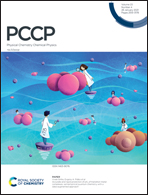Free ions in kerosene-based ferrofluid detected by impedance spectroscopy
Abstract
The influence of the free ions on the electric response of cells filled with kerosene-based ferrofluids in the low-frequency region is explored. The experimental investigations have been performed on cells limited by different types of electrodes, with the same kind of ferrofluid, by means of the impedance spectroscopy technique. The electrodes considered in our study are made of titanium, platinum, gold, brass and surgical steel. The analysis of the spectra of the real and imaginary parts of the electric impedance of the cell data has been done by means of a simplified version of the Poisson–Nernst–Planck model, in which only the carriers of a given sign are mobile. The agreement between the theoretical predictions and the experimental data is rather good on the whole frequency range. From the analysis of the data in the low-frequency range, dominated by the properties of the electrodes, we discovered that only gold electrodes behave in a manner different from the other electrodes. From the best fit of the experimental data the free-ions density is determined as well as their diffusion coefficient in kerosene. The estimated dielectric constant of the kerosene is in good agreement with the values reported in the literature. In the framework of our model, the surface conductivity of the electrodes has been also determined.



 Please wait while we load your content...
Please wait while we load your content...